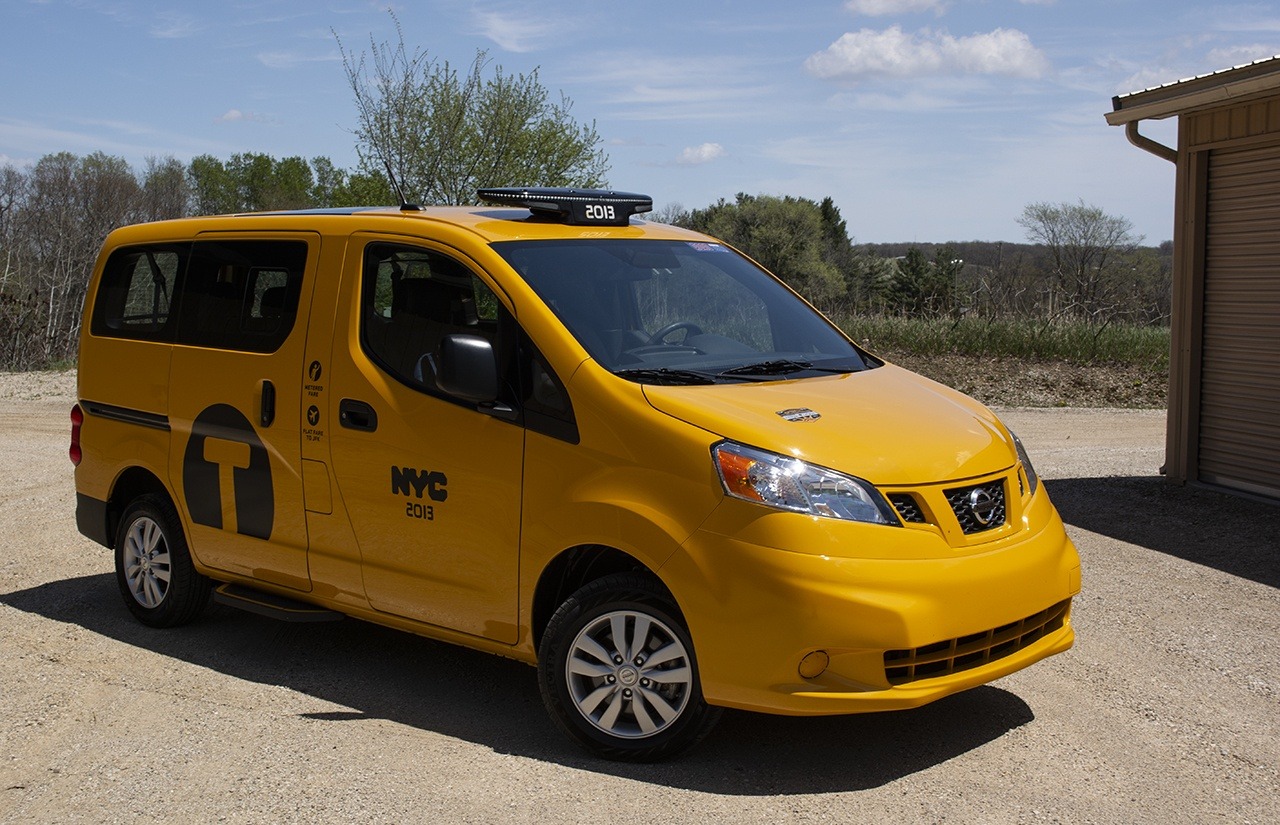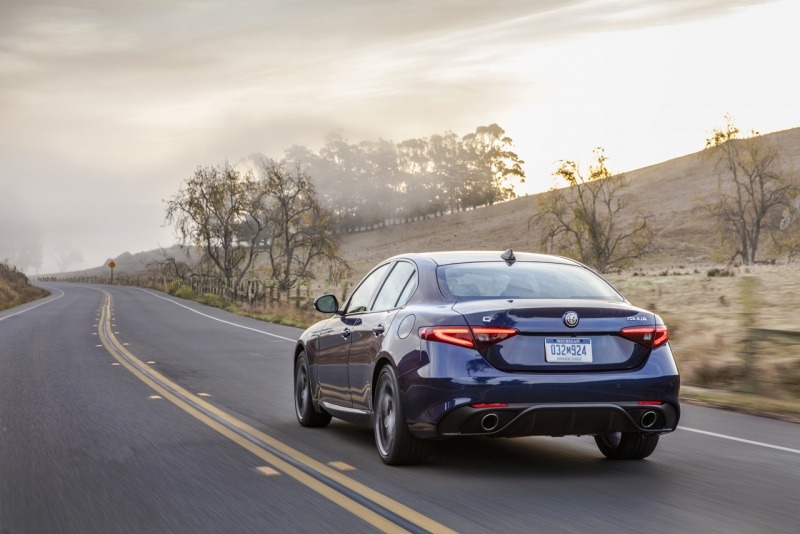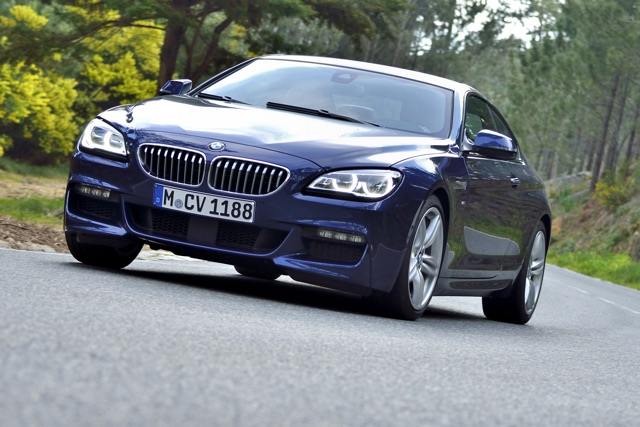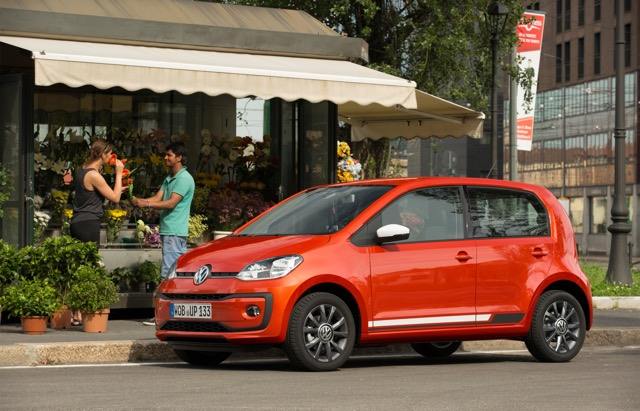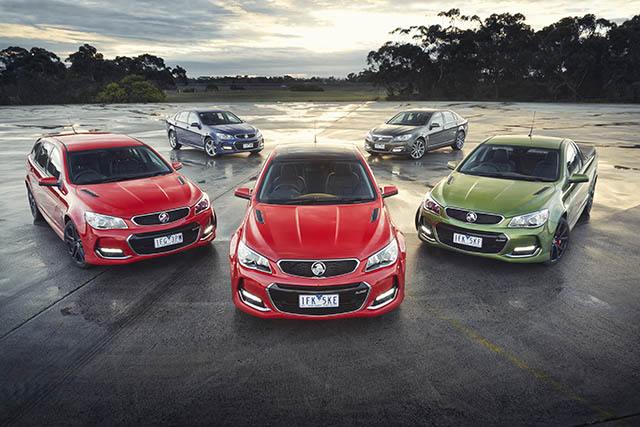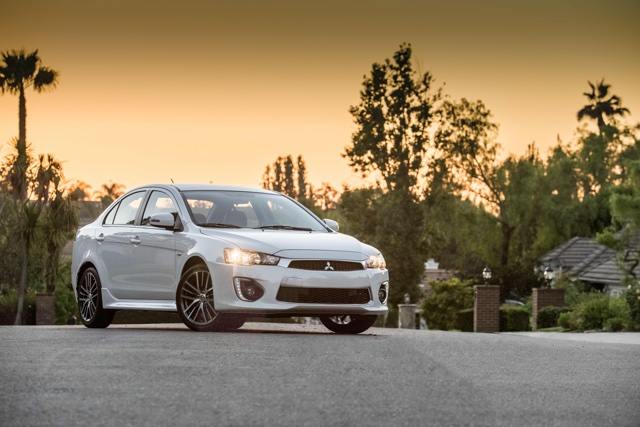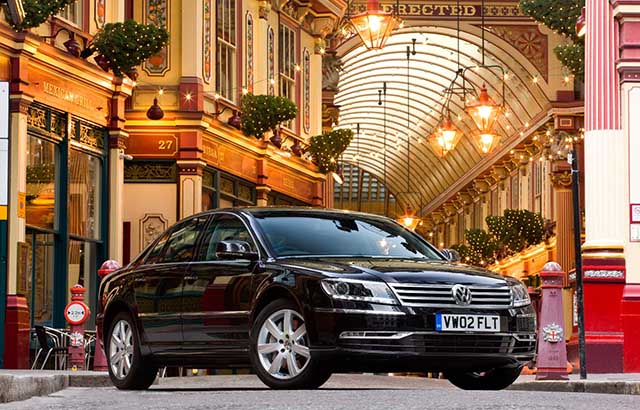Search the Community
Showing results for tags 'end'.
-
Nearly a decade ago, Nissan launched an ambitious assault on the U.S. commercial van market with the launch of their NV vans. It started with the Titan-dervived, body-on-frame NV1500/2500/3500 vans. This was followed by the unibody NV200 van, which was for a time the "Taxi of Tommorow" in New York City. But Nissan is reportedly throwing in the towel. Automotive News has learned from a source that it will end production of their commercial vans. No time frame was given. "We don't want to go more in the business of vans in the U.S. We will exit," said the source. Nissan spokesman Brian Brockman declined to comment about the future of the commercial vans, only saying in a statement that the automaker " is considering a number of opportunities to streamline the product portfolio and drive efficiencies within our manufacturing operations." When the NV lineup was launched in 2009, Nissan was hoping to steal away sales from the Detroit Three. At the time, Ford and GM had 97 percent of the large van segment. The NV was positioned as being a more modern option compared to the Ford E-Series and Chevrolet Express/GMC Savana. It was more comfortable with adjustable seats, taller ceiling for easier access to the cargo area, and pre-drilled holes in the body to allow owners to add interior racks easily. But Nissan wasn't able to make decent inroads into this market, only achieving around an eight percent share in the marketplace. What was the NV's downfall? Brand Loyalty to the American brands Using a modified Titan platform for the larger vans comprised them in urban areas with their extended front nose, and cargo capacity. "A third of the vehicle is dedicated to the engine and passenger compartment instead of cargo. The van takes up more real estate for the same amount of cargo space," explained Sam Fiorani, vice president at AutoForecast Solutions. NV200 Taxis were dinged by taxi companies poor ride quality, difficulty entering/exiting the van for elderly passengers, and increasing maintenance costs. Proved to a be a difficult sale to fleet buyers due to the automaker lacking the numerous combinations of light-trucks that the Detroit three can offer. Trucks and vans work hand in hand to attract sales in the commercial market. "Chevrolet and Ford can be everything to everybody," said Tyler Slade, operating partner at Tim Dahle Nissan Southtowne in Salt Lake City. "When we went to some of these fleet companies, it didn't make sense for them to have trucks from Ford and vans from Nissan." Add in $2.8 billion in cuts that the company is planning to stay afloat and COVID-19, and the death knell was coming sooner than later for the NV family. If Nissan does go forward with dropping the NV family, this will be a major blow to about a forth of Nissan dealers in the U.S. They made various investments such as installing heavy-duty lifts capable of lifting fully-loaded vans and having a dedicated sales staff to handle specific fleet issues. "Dealers now have serious concerns about their investments in commercial vehicles," said Slade. There is also the question as to whether Nissan may try again. Automotive News notes that in the new business strategy outlined last month, Nissan is wanting more global cooperation with its alliance partner Renault. The French automaker already has a number of vans in its lineup and is quite successful in various markets. Nissan already sells a version of the Renault Traffic, called the NV300 in Europe. But getting a Renault van into the U.S. as a Nissan will be difficult and costly in terms of homologation. Also, Nissan would still need to figure out how to appeal to larger fleet buyers that go with Ford or GM. Source: Automotive News (Subscription Required), The Drive Pic Credit: William Maley for Cheers & Gears View full article
- 9 replies
-
- commerical vans
- end
-
(and 3 more)
Tagged with:
-
Nearly a decade ago, Nissan launched an ambitious assault on the U.S. commercial van market with the launch of their NV vans. It started with the Titan-dervived, body-on-frame NV1500/2500/3500 vans. This was followed by the unibody NV200 van, which was for a time the "Taxi of Tommorow" in New York City. But Nissan is reportedly throwing in the towel. Automotive News has learned from a source that it will end production of their commercial vans. No time frame was given. "We don't want to go more in the business of vans in the U.S. We will exit," said the source. Nissan spokesman Brian Brockman declined to comment about the future of the commercial vans, only saying in a statement that the automaker " is considering a number of opportunities to streamline the product portfolio and drive efficiencies within our manufacturing operations." When the NV lineup was launched in 2009, Nissan was hoping to steal away sales from the Detroit Three. At the time, Ford and GM had 97 percent of the large van segment. The NV was positioned as being a more modern option compared to the Ford E-Series and Chevrolet Express/GMC Savana. It was more comfortable with adjustable seats, taller ceiling for easier access to the cargo area, and pre-drilled holes in the body to allow owners to add interior racks easily. But Nissan wasn't able to make decent inroads into this market, only achieving around an eight percent share in the marketplace. What was the NV's downfall? Brand Loyalty to the American brands Using a modified Titan platform for the larger vans comprised them in urban areas with their extended front nose, and cargo capacity. "A third of the vehicle is dedicated to the engine and passenger compartment instead of cargo. The van takes up more real estate for the same amount of cargo space," explained Sam Fiorani, vice president at AutoForecast Solutions. NV200 Taxis were dinged by taxi companies poor ride quality, difficulty entering/exiting the van for elderly passengers, and increasing maintenance costs. Proved to a be a difficult sale to fleet buyers due to the automaker lacking the numerous combinations of light-trucks that the Detroit three can offer. Trucks and vans work hand in hand to attract sales in the commercial market. "Chevrolet and Ford can be everything to everybody," said Tyler Slade, operating partner at Tim Dahle Nissan Southtowne in Salt Lake City. "When we went to some of these fleet companies, it didn't make sense for them to have trucks from Ford and vans from Nissan." Add in $2.8 billion in cuts that the company is planning to stay afloat and COVID-19, and the death knell was coming sooner than later for the NV family. If Nissan does go forward with dropping the NV family, this will be a major blow to about a forth of Nissan dealers in the U.S. They made various investments such as installing heavy-duty lifts capable of lifting fully-loaded vans and having a dedicated sales staff to handle specific fleet issues. "Dealers now have serious concerns about their investments in commercial vehicles," said Slade. There is also the question as to whether Nissan may try again. Automotive News notes that in the new business strategy outlined last month, Nissan is wanting more global cooperation with its alliance partner Renault. The French automaker already has a number of vans in its lineup and is quite successful in various markets. Nissan already sells a version of the Renault Traffic, called the NV300 in Europe. But getting a Renault van into the U.S. as a Nissan will be difficult and costly in terms of homologation. Also, Nissan would still need to figure out how to appeal to larger fleet buyers that go with Ford or GM. Source: Automotive News (Subscription Required), The Drive Pic Credit: William Maley for Cheers & Gears
- 9 comments
-
- commerical vans
- end
-
(and 3 more)
Tagged with:
-
Audi is one of the few brands that offers a 12-cylinder engine in the form of the A8 W12. But after this new-generation A8, the W12 will be no more for the four rings. “We will not have the 12-cylinder forever. There are customers who really want the 12-cylinder and they are happy with it and are going to get it. But this is going to be the last installation,” said Peter Mertens, Audi’s R&D boss. This decision won't affect the U.S. since Audi retired the W12 in 2017. The W12 engine has only been modest seller since it was launched in 2011 for Europe and Asia, and in 2005 for the U.S. Bentley will continue to use the W12 in the Bentayga and Continental GT. Possibly on the cutting block is Audi's 5.2L V10 engine used in the R8. Various reports say Audi is working on a twin-turbo V6 for their supercar, which would likely divert a lot of the demand for the more expensive V10. Source: Car and Driver View full article
-
Audi is one of the few brands that offers a 12-cylinder engine in the form of the A8 W12. But after this new-generation A8, the W12 will be no more for the four rings. “We will not have the 12-cylinder forever. There are customers who really want the 12-cylinder and they are happy with it and are going to get it. But this is going to be the last installation,” said Peter Mertens, Audi’s R&D boss. This decision won't affect the U.S. since Audi retired the W12 in 2017. The W12 engine has only been modest seller since it was launched in 2011 for Europe and Asia, and in 2005 for the U.S. Bentley will continue to use the W12 in the Bentayga and Continental GT. Possibly on the cutting block is Audi's 5.2L V10 engine used in the R8. Various reports say Audi is working on a twin-turbo V6 for their supercar, which would likely divert a lot of the demand for the more expensive V10. Source: Car and Driver
-
More and more automakers are beginning to turn away from diesel due to demand for the fuel dropping and the rising costs of making engines compliant. The latest automaker that could be leaving the diesel fraternity is Fiat Chrysler Automobiles. The Financial Times has learned from sources that FCA plans on eliminating diesel engines from their passenger vehicles by 2022. This will be announced during the reveal of FCA's new four-year plan expected to take place on June 1st. FCA will continue to utilize diesel engines in commercial vehicles (including Ram Trucks), though it is unclear for how long. FCA declined to comment on this report when asked by Reuters. Source: Financial Times (Subscription Required), Reuters via Automotive News (Subscription Required)
-
More and more automakers are beginning to turn away from diesel due to demand for the fuel dropping and the rising costs of making engines compliant. The latest automaker that could be leaving the diesel fraternity is Fiat Chrysler Automobiles. The Financial Times has learned from sources that FCA plans on eliminating diesel engines from their passenger vehicles by 2022. This will be announced during the reveal of FCA's new four-year plan expected to take place on June 1st. FCA will continue to utilize diesel engines in commercial vehicles (including Ram Trucks), though it is unclear for how long. FCA declined to comment on this report when asked by Reuters. Source: Financial Times (Subscription Required), Reuters via Automotive News (Subscription Required) View full article
-

BMW Quietly Ended Production of 6-Series Coupe, Doesn't Tell Anyone
William Maley posted an article in BMW
Usually, an automaker will announce they are ending production of a certain model. BMW didn't do that when it stopped production of the 6-Series coupe back in February. Road & Track got confirmation about this change from a BMW spokesperson. No reason was given as to why production of the coupe ended, but it is a safe bet that low sales played a role in this decision. This only adds fuel to the fire about reports that BMW is working on an 8-Series coupe. Our last report back in October said the company was planning to launch the 8-Series in late 2018 with the coupe. A convertible and V12 would follow sometime thereafter. Because of this, the 6-Series coupe and convertible would not be replaced. Source: Road & Track -
Usually, an automaker will announce they are ending production of a certain model. BMW didn't do that when it stopped production of the 6-Series coupe back in February. Road & Track got confirmation about this change from a BMW spokesperson. No reason was given as to why production of the coupe ended, but it is a safe bet that low sales played a role in this decision. This only adds fuel to the fire about reports that BMW is working on an 8-Series coupe. Our last report back in October said the company was planning to launch the 8-Series in late 2018 with the coupe. A convertible and V12 would follow sometime thereafter. Because of this, the 6-Series coupe and convertible would not be replaced. Source: Road & Track View full article
-

Volkswagen Believes Engine Downsize Trend Is Coming To A Close
William Maley posted an article in Volkswagen
Automakers have been downsizing their engines and adding turbochargers to improve fuel economy while retaining power from larger displacement engines. But is there a point where this trend doesn't make sense anymore? Volkswagen believes that time is coming very soon. "The trend of downsizing is over," said Herbert Diess, Volkswagen's chairman. "Emissions tend to go up as engines get smaller." This is due to smaller engines needing to work much harder to produce the power figures of higher displacement engines, which in turns causes more fuel to be used. Currently, small displacement engines do very well in the European fuel economy and emission tests. But the test results have come under intense scrutiny as they don't match up to real-world tests. In a few years, the European Union will introduce new procedures that include tests in the lab and real-world. The new tests could put this trend at a standstill. Diess said they would continue to offer the turbocharged 1.0L three-cylinder and 1.6L turbodiesel, but wouldn't go any smaller in the future. Source: The Telegraph- 7 comments
-
- end
- small displacement engines
-
(and 2 more)
Tagged with:
-
Automakers have been downsizing their engines and adding turbochargers to improve fuel economy while retaining power from larger displacement engines. But is there a point where this trend doesn't make sense anymore? Volkswagen believes that time is coming very soon. "The trend of downsizing is over," said Herbert Diess, Volkswagen's chairman. "Emissions tend to go up as engines get smaller." This is due to smaller engines needing to work much harder to produce the power figures of higher displacement engines, which in turns causes more fuel to be used. Currently, small displacement engines do very well in the European fuel economy and emission tests. But the test results have come under intense scrutiny as they don't match up to real-world tests. In a few years, the European Union will introduce new procedures that include tests in the lab and real-world. The new tests could put this trend at a standstill. Diess said they would continue to offer the turbocharged 1.0L three-cylinder and 1.6L turbodiesel, but wouldn't go any smaller in the future. Source: The Telegraph View full article
- 7 replies
-
- end
- small displacement engines
-
(and 2 more)
Tagged with:
-
We have known for a couple of years that Holden will end Australian production in 2017. Today, Holden announced that October 20th, 2017 will be the final day of production at their Elizabeth plant. This will end over 60 years of production at the plant. “While this confirmation isn’t a surprise for anyone and we’ve been working toward this for nearly four years, we can now confirm the actual date for our people and our suppliers. Putting our people first and foremost has always been our highest priority,” said Richard Phillips, Holden's Executive Director of Manufacturing in a statement. Before that date arrives, Holden plans on building 30,000 Commodores, Utes and Caprices at the plant. These will include some rumored high-performance models of the Commodore. Workers at the plant and suppliers were notified of the date the day before. “This October may bring to a close more than 60 years of vehicle manufacturing by Holden at Elizabeth but I know it will be business as usual for our manufacturing workforce until then – we have tens of thousands of world-class cars to build in coming months and I know we all want to see Holden have great success in Australia for many years to come," said Philips. This leaves Toyota as the only automaker who hasn't announced when it will end production in Australia. A spokesman told CarAdvice that a date would be announced before the end of the first quarter. Ford already ended Australian production last October. Source: CarAdvice, Holden Press Release is on Page 2 HOLDEN CONFIRMS OCTOBER 20 FOR END OF PRODUCTION AND FINAL TRANSITION TO VEHICLE IMPORTER; PROVIDES CERTAINTY TO EMPLOYEES AND SUPPLY CHAIN NETWORK Holden manufacturing continues until October 20, 2017. More than 30,000 vehicles to be built before manufacturing ends. Nearly 70% of Holden’s Elizabeth employees have secured jobs within 12 months of leaving. Holden to retain more than 300 designers and engineers in addition to 10,000 employees at Melbourne headquarters, Proving ground, Design Studio and across 230-strong national Holden dealer network. Holden today has confirmed it will continue manufacturing in Australia until October 20, 2017, when the final car will be built at its Elizabeth plant and Holden becomes a national sales company and vehicle importer for the long-term in Australia. Today Holden’s manufacturing workforce in Adelaide were the first to be told the company will fulfill its 2013 commitment to manufacture vehicles at its Elizabeth plant until the final quarter of 2017. Holden Executive Director of Manufacturing, Richard Phillips, said that Holden’s overriding priority is giving employees and suppliers advance notice and providing certainty. “While this confirmation isn’t a surprise for anyone and we’ve been working toward this for nearly four years, we can now confirm the actual date for our people and our suppliers. Putting our people first and foremost has always been our highest priority,” Mr Phillips said. “This October may bring to a close more than 60 years of vehicle manufacturing by Holden at Elizabeth but I know it will be business as usual for our manufacturing workforce until then – we have tens of thousands of world-class cars to build in coming months and I know we all want to see Holden have great success in Australia for many years to come. “Every day our employees exhibit professionalism and passion for achieving quality. We are categorically building the best cars Holden has ever built and that is backed up by internal and external data. They simply are a fantastic team that will ensure our last locally-made car is also our best car ever.” Holden has assembled vehicles for domestic and export markets at the Elizabeth plant since 1963 and will continue to manufacture the world-class Holden Commodore range there until October 20, with nearly 1000 employees remaining at the Elizabeth plant in production, engineering and support roles until production ends. There are no plans for any further workforce reductions ahead of October 20. Of the nearly 700 people who have left Holden’s Elizabeth plant since 2015, 80 per cent have successfully transitioned within 12 months of leaving (69 per cent employed, 5 per cent in training, 3 per cent have retired and 3 per cent are volunteering). Holden’s Transition Support program will continue to prepare job seekers for new careers and support those opting for retirement until well after the factory closes. During 2016, the Elizabeth plant was recognised with two awards for safety and financial performance within General Motors International. All Holden employees leaving the business have access to a suite of transition services and up to $3000 in approved training and $500 for financial advice - all part of Holden’s $15 million contribution to the federal government-led Growth Fund for specific support of automotive manufacturing employees. Holden’s Transition Centre was opened at its Elizabeth plant in 2014 to provide a range of support services including information sessions, workshops, career counselling, employment expos, resume writing, interview skills preparation and more. Holden Chairman and Managing Director, Mark Bernhard, said Holden’s manufacturing workforce had set new benchmarks for quality and performance in the past four years. “They have continually pushed to improve the quality of their work for the benefit of our customers – this commitment, continuous improvement attitude and passion have been exhibited in spades in challenging circumstances,” Mr Bernhard said. “It’s not surprising that their skills, work ethic and flexibility are highly sought after and they are leaving a legacy for Holden that deserves to be honoured by ensuring this company has a bright and successful future. “Holden continues to change but we are proud to retain a significant presence in Australia for the long-term that includes more than 300 people across our local design and engineering workforces, in addition to the approximately 700 corporate staff and 10,000 people employed across our dealer network. Holden remains committed to Australia and our customers for many, many years to come”. Holden Transition Support Holden acknowledges the impact the end of local manufacturing has on our people and their families, across the country and throughout the industry. We are doing everything in our power to allow our people to make considered choices and help them move onto their next opportunity. Every Holden worker leaving the business has access to a suite of transition services and up to $3000 in approved training; all part of Holden’s $15 million contribution to the federal government’s Growth Fund for specific support of our manufacturing and engineering employees. The Transition Centre established at Holden’s Elizabeth plant is open to employees, contractors and supplier employees. As a result of Holden’s world-class transition services, about 80 per cent of people who have left the business have gone on to find other work. This does not include those who chose to retire or made personal decisions not to seek work. Holden has proactively engaged with HR and business leaders in South Australia and interstate, who have toured the Elizabeth site and viewed the variety of skills and capabilities of our workforce. Employees who have secured another job have been able to access an early voluntary separation package, helping them to take up opportunities. Holden’s Transition Centre at Elizabeth opened in 2014, after significant research into global best practice and consultation with employees and partner organisations. Support and services for employees includes: Up to $3000 training funds Career counselling Financial advice and superannuation support Coaching sessions to develop individual tailored plans Information on career pathways, training providers and courses Industry information sessions Careers and training expos Computer training Jobs vacancy board Dedicated staff to help answer questions Resume and job application writing workshops Interview training Networking training Job search training Department of Human Services (representatives and self-service kiosks) Resume writing workshops NewAccess program (BeyondBlue/BeyondAuto) Future of Holden: Holden will launch 24 major vehicles and 36 new drivetrain combinations by the end of 2020 Holden vehicles will continue to be tuned and tested for Australian conditions and customers with the retention of the famous Lang Lang Proving Ground in Victoria, along with advanced engineering capabilities Holden’s Global Design centre continues to be based in Port Melbourne, contributing to local and global product programs Holden will retain more than 300 designers and engineers beyond 2017 This is in addition to approximately 700 corporate staff and 10,000 people employed across the 230-strong Holden dealer network More than one-third of Holden’s future product portfolio will be sourced from Europe; with vehicles also being sourced from North America and Asia The esteemed Commodore nameplate will live on from 2018 with Holden’s next-generation large car Home Ground Advantage, Holden’s $5 million, 10-year commitment to grassroots sporting clubs has been a huge success with more than 5000 entries since launch Holden has launched the biggest Capped Price Servicing Program in the country, covering every Holden ever built. View full article
-
We have known for a couple of years that Holden will end Australian production in 2017. Today, Holden announced that October 20th, 2017 will be the final day of production at their Elizabeth plant. This will end over 60 years of production at the plant. “While this confirmation isn’t a surprise for anyone and we’ve been working toward this for nearly four years, we can now confirm the actual date for our people and our suppliers. Putting our people first and foremost has always been our highest priority,” said Richard Phillips, Holden's Executive Director of Manufacturing in a statement. Before that date arrives, Holden plans on building 30,000 Commodores, Utes and Caprices at the plant. These will include some rumored high-performance models of the Commodore. Workers at the plant and suppliers were notified of the date the day before. “This October may bring to a close more than 60 years of vehicle manufacturing by Holden at Elizabeth but I know it will be business as usual for our manufacturing workforce until then – we have tens of thousands of world-class cars to build in coming months and I know we all want to see Holden have great success in Australia for many years to come," said Philips. This leaves Toyota as the only automaker who hasn't announced when it will end production in Australia. A spokesman told CarAdvice that a date would be announced before the end of the first quarter. Ford already ended Australian production last October. Source: CarAdvice, Holden Press Release is on Page 2 HOLDEN CONFIRMS OCTOBER 20 FOR END OF PRODUCTION AND FINAL TRANSITION TO VEHICLE IMPORTER; PROVIDES CERTAINTY TO EMPLOYEES AND SUPPLY CHAIN NETWORK Holden manufacturing continues until October 20, 2017. More than 30,000 vehicles to be built before manufacturing ends. Nearly 70% of Holden’s Elizabeth employees have secured jobs within 12 months of leaving. Holden to retain more than 300 designers and engineers in addition to 10,000 employees at Melbourne headquarters, Proving ground, Design Studio and across 230-strong national Holden dealer network. Holden today has confirmed it will continue manufacturing in Australia until October 20, 2017, when the final car will be built at its Elizabeth plant and Holden becomes a national sales company and vehicle importer for the long-term in Australia. Today Holden’s manufacturing workforce in Adelaide were the first to be told the company will fulfill its 2013 commitment to manufacture vehicles at its Elizabeth plant until the final quarter of 2017. Holden Executive Director of Manufacturing, Richard Phillips, said that Holden’s overriding priority is giving employees and suppliers advance notice and providing certainty. “While this confirmation isn’t a surprise for anyone and we’ve been working toward this for nearly four years, we can now confirm the actual date for our people and our suppliers. Putting our people first and foremost has always been our highest priority,” Mr Phillips said. “This October may bring to a close more than 60 years of vehicle manufacturing by Holden at Elizabeth but I know it will be business as usual for our manufacturing workforce until then – we have tens of thousands of world-class cars to build in coming months and I know we all want to see Holden have great success in Australia for many years to come. “Every day our employees exhibit professionalism and passion for achieving quality. We are categorically building the best cars Holden has ever built and that is backed up by internal and external data. They simply are a fantastic team that will ensure our last locally-made car is also our best car ever.” Holden has assembled vehicles for domestic and export markets at the Elizabeth plant since 1963 and will continue to manufacture the world-class Holden Commodore range there until October 20, with nearly 1000 employees remaining at the Elizabeth plant in production, engineering and support roles until production ends. There are no plans for any further workforce reductions ahead of October 20. Of the nearly 700 people who have left Holden’s Elizabeth plant since 2015, 80 per cent have successfully transitioned within 12 months of leaving (69 per cent employed, 5 per cent in training, 3 per cent have retired and 3 per cent are volunteering). Holden’s Transition Support program will continue to prepare job seekers for new careers and support those opting for retirement until well after the factory closes. During 2016, the Elizabeth plant was recognised with two awards for safety and financial performance within General Motors International. All Holden employees leaving the business have access to a suite of transition services and up to $3000 in approved training and $500 for financial advice - all part of Holden’s $15 million contribution to the federal government-led Growth Fund for specific support of automotive manufacturing employees. Holden’s Transition Centre was opened at its Elizabeth plant in 2014 to provide a range of support services including information sessions, workshops, career counselling, employment expos, resume writing, interview skills preparation and more. Holden Chairman and Managing Director, Mark Bernhard, said Holden’s manufacturing workforce had set new benchmarks for quality and performance in the past four years. “They have continually pushed to improve the quality of their work for the benefit of our customers – this commitment, continuous improvement attitude and passion have been exhibited in spades in challenging circumstances,” Mr Bernhard said. “It’s not surprising that their skills, work ethic and flexibility are highly sought after and they are leaving a legacy for Holden that deserves to be honoured by ensuring this company has a bright and successful future. “Holden continues to change but we are proud to retain a significant presence in Australia for the long-term that includes more than 300 people across our local design and engineering workforces, in addition to the approximately 700 corporate staff and 10,000 people employed across our dealer network. Holden remains committed to Australia and our customers for many, many years to come”. Holden Transition Support Holden acknowledges the impact the end of local manufacturing has on our people and their families, across the country and throughout the industry. We are doing everything in our power to allow our people to make considered choices and help them move onto their next opportunity. Every Holden worker leaving the business has access to a suite of transition services and up to $3000 in approved training; all part of Holden’s $15 million contribution to the federal government’s Growth Fund for specific support of our manufacturing and engineering employees. The Transition Centre established at Holden’s Elizabeth plant is open to employees, contractors and supplier employees. As a result of Holden’s world-class transition services, about 80 per cent of people who have left the business have gone on to find other work. This does not include those who chose to retire or made personal decisions not to seek work. Holden has proactively engaged with HR and business leaders in South Australia and interstate, who have toured the Elizabeth site and viewed the variety of skills and capabilities of our workforce. Employees who have secured another job have been able to access an early voluntary separation package, helping them to take up opportunities. Holden’s Transition Centre at Elizabeth opened in 2014, after significant research into global best practice and consultation with employees and partner organisations. Support and services for employees includes: Up to $3000 training funds Career counselling Financial advice and superannuation support Coaching sessions to develop individual tailored plans Information on career pathways, training providers and courses Industry information sessions Careers and training expos Computer training Jobs vacancy board Dedicated staff to help answer questions Resume and job application writing workshops Interview training Networking training Job search training Department of Human Services (representatives and self-service kiosks) Resume writing workshops NewAccess program (BeyondBlue/BeyondAuto) Future of Holden: Holden will launch 24 major vehicles and 36 new drivetrain combinations by the end of 2020 Holden vehicles will continue to be tuned and tested for Australian conditions and customers with the retention of the famous Lang Lang Proving Ground in Victoria, along with advanced engineering capabilities Holden’s Global Design centre continues to be based in Port Melbourne, contributing to local and global product programs Holden will retain more than 300 designers and engineers beyond 2017 This is in addition to approximately 700 corporate staff and 10,000 people employed across the 230-strong Holden dealer network More than one-third of Holden’s future product portfolio will be sourced from Europe; with vehicles also being sourced from North America and Asia The esteemed Commodore nameplate will live on from 2018 with Holden’s next-generation large car Home Ground Advantage, Holden’s $5 million, 10-year commitment to grassroots sporting clubs has been a huge success with more than 5000 entries since launch Holden has launched the biggest Capped Price Servicing Program in the country, covering every Holden ever built.
-
There will be one less compact car on sale come August. Motor1 has learned from Mitsubishi Motors North America’s executive vice president and chief operating officer, Don Swearingen that production of the Lancer compact sedan will end this August. Of course. you are probably saying to yourself that Mitsubishi was still building the Lancer?! The answer is yes. Will Mitsubishi have a replacement for the Lancer, especially considering the partnership with Nissan? Swearingen said no. He told Autoblog that the sedan marketplace is shrinking and the Japanese needs to focus on products that make them money. Hence why they are focusing on crossovers with a new model that is slated to slot between the Outlander Sport and Outlander due later this year. The Lancer was never a big seller for Mitsubishi. Its best year was back in 2002 when the company moved 69,000 Lancers. In 2016, Mitsubishi only sold 14,304 Lancers. Source: Motor1, Autoblog
- 4 comments
-
There will be one less compact car on sale come August. Motor1 has learned from Mitsubishi Motors North America’s executive vice president and chief operating officer, Don Swearingen that production of the Lancer compact sedan will end this August. Of course. you are probably saying to yourself that Mitsubishi was still building the Lancer?! The answer is yes. Will Mitsubishi have a replacement for the Lancer, especially considering the partnership with Nissan? Swearingen said no. He told Autoblog that the sedan marketplace is shrinking and the Japanese needs to focus on products that make them money. Hence why they are focusing on crossovers with a new model that is slated to slot between the Outlander Sport and Outlander due later this year. The Lancer was never a big seller for Mitsubishi. Its best year was back in 2002 when the company moved 69,000 Lancers. In 2016, Mitsubishi only sold 14,304 Lancers. Source: Motor1, Autoblog View full article
-
We knew it was coming, it was just a matter of when. In March, Volkswagen will end production of the current Phaeton at the Dresden plant. A pet project of former Chairman Ferdinand Piëch, the Phaeton never gained traction in the luxury flagship market for over a decade. Last year, Volkswagen only built 4,000 Phaetons. Volkswagen will bring back the Phaeton nameplate in 2020 for a fully electric luxury sedan. As for the Dresden plant where the Phaeton is built, it will be renovated to build an upcoming electric vehicle. Carsten Krebs, a spokesman at the factory tells Bloomberg that the renovation will take about year to complete. Source: Bloomberg View full article
- 22 replies
-
- End
- March 2016
-
(and 4 more)
Tagged with:
-

Volkswagen To End Production Of Current Phaeton Next March
William Maley posted an article in Volkswagen
We knew it was coming, it was just a matter of when. In March, Volkswagen will end production of the current Phaeton at the Dresden plant. A pet project of former Chairman Ferdinand Piëch, the Phaeton never gained traction in the luxury flagship market for over a decade. Last year, Volkswagen only built 4,000 Phaetons. Volkswagen will bring back the Phaeton nameplate in 2020 for a fully electric luxury sedan. As for the Dresden plant where the Phaeton is built, it will be renovated to build an upcoming electric vehicle. Carsten Krebs, a spokesman at the factory tells Bloomberg that the renovation will take about year to complete. Source: Bloomberg- 22 comments
-
- End
- March 2016
-
(and 4 more)
Tagged with:
-
G. David Felt Alternative Fuels & Propulsion writer www.CheersandGears.com According to the Frankfurt AFP, ten years after the end of the iconic original beetle, Volkswagen is ending their Type 2 Van on December 20, 2013. This will close a 63 year run for a Van that has seen world history through the eyes of many. To many, the camper van star shines as bright as the original Beetle star shined when production came to a close. The Type 2 -- which shares the Beetle's rear engine and its axles -- started life as a doodle by Dutch car salesman Ben Pon, VW's first car dealer outside Germany, on a visit to the carmaker's plant in Wolfsburg in 1947. VW finally agreed to put it into series production in March 1950. Originally conceived as a cargo transport, it was given the ability to haul people in 1951. The hippie generation of the 60's and 70's gave it cult status with world wide building of the van up to 1979 when Germany stopped production. Production ended in South Africa and mexico over the 80's and 90's leaving sole production to the Brazil plant which produced and shipped the van's world wide. Following the announcement earlier this year to finally halt production, VW launched a special edition, costing 85,000 reais or around 27,000 euros ($37,500). Available to those that could import the van that no longer meets most strict emissions. Despite its demise, the camper van's legend will live on, and it is etched into the collective memory by its appearances in the Scooby-Doo TV series and more recently in the film "Little Miss Sunshine".
- 7 replies
-
- 1
-

-
- Camper Van
- end
-
(and 1 more)
Tagged with:


